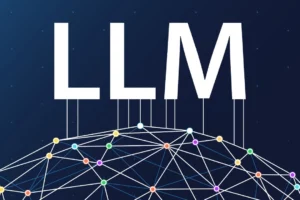The capabilities of artificial intelligence continue to advance at a rapid pace, pushing the boundaries of what was once considered solely in the human domain. One area that has witnessed striking progress is natural language processing (NLP), where AI systems are learning to generate human-quality text.
This raises a thought-provoking question: can AI-written stories, scripts, articles, and other content actually fool human evaluators in double-blind studies? This blog delves into this topic, analyzing the current state of AI-generated text, its capabilities, and the revelations from double-blind studies testing its ability to deceive.
:max_bytes(150000):strip_icc()/GettyImages-1160331593-c37e23bd7c0b4bd5827f3e40e1ec34f6.jpg)
The Rise of the AI Wordsmith: Models That Can Write Like Humans
In the early days, AI language generation relied on simple rule-based systems with limited capabilities. However, the advent of deep learning and large language models (LLMs) like GPT-3 has completely changed the game.
These foundation models are first trained on massive text datasets across diverse subjects and styles. They then fine-tune on specific tasks like translation, summarization, and dialogue to further improve. This enables them to produce remarkably human-like text.
LLMs can craft various creative formats – from poems, scripts, and code to research papers and news articles. They can even mimic different styles, genres, and authors when generating text. The samples reflect cohesive writing with accurate grammar, diverse vocabulary, and contextual coherence.
Key Achievements Demonstrating Sophisticated Writing Capabilities
- Anthropic’s Claude model wrote a comprehensive United States Constitutional amendment in response to a prompt
- AI startup Anthropic developed an LLM for policy writing, with Constitutional quality text generation as one benchmark
- AI startup Anthropic developed an LLM for policy writing, with Constitutional quality text generation as one benchmark
- Google’s LaMDA model carried out engaging and thoughtful conversations with human testers, even on spiritual subjects
This demonstrates that AI language models are quickly learning to produce high-quality text rivaling human capabilities.
Testing Deception in Double-Blind Studies: Can AI Trick Human Judges?
To evaluate advances in AI writing competency, researchers frequently employ double-blind tests. In these studies, human judges assess text samples without knowing the author – human or AI. This removes any bias and tests how deceptive AI-generated text can be.
Noteworthy Double-Blind Studies and Results
- A 2019 Nature Machine Intelligence study tested if judges could flag AI-written news articles on various topics. The human judges struggled to consistently identify the AI content.
- Another study published in the Transactions of the Association for Computational Linguistics evaluated TV show scripts written by humans and AI. Most judges could not reliably distinguish between them.
- However, a 2020 report in Computers and Literature found shortcomings in AI-produced dialogue. While grammar and structure matched humans, the emotional expressiveness and coherence over long conversations lagged.
So while AI models can clearly mimic many attributes of human writing, some nuanced aspects of creativity and emotional resonance remain challenging.
Ongoing Efforts to Enhance AI Writing and Identify Machine-Generated Text
To address the gaps outlined above, researchers are exploring various techniques:
- Novel AI architecture designs to better capture attributes like humor, wit, empathy in generating text
- Training language models on specialized datasets – like movie scripts and plays – to improve dialogue writing
- Developing robust statistical models to effectively flag AI-written text by analyzing stylistic patterns not typical of human writing
The Ethical Implications of Deceptive AI-Generated Text
As AI language models become increasingly adept at mimicking human writing, it raises some ethical and philosophical dilemmas:
- If AI can realistically simulate human text, how can we ensure authenticity and build user trust, especially for content like news, research, and legal policies?
- Could the technology enable creation of “Deepfakes for text” – spreading machine-generated misinformation or manipulated propaganda?
- Would unattributed AI-written content violate intellectual property rights or plagiarism standards?
These concerns highlight the need for developing AI writing technology responsibly and transparently. Clear guidelines, safeguards, and disclaimers would be prudent to prevent misrepresentation or misuse.
Promoting Responsible Advancements in AI Writing Systems
The following initiatives could help nurture progress in this space:
- Industry standards for clearly identifying AI-generated text across different mediums
- Laws and regulations prohibiting malicious uses like slander, libel, or misinformation
- Transparent documentation of training data and methods used by companies developing AI writing tools
- Allowing user control for discretionary AI content attribution
- Open multi-stakeholder discussions weighing technological possibilities with social impacts
The Future Trajectory of AI Writing and Detection Capabilities
The field of AI text generation continues to rapidly advance. With relentless progress in model architecture, training techniques, and compute power, AI writing skills – including ability to deceive – could become even more sophisticated moving forward.
This necessitates counteractive improvements in machine-generated text detection as well. Ongoing research exploring stylometry, content patterns, and statistical anomalies could make AI authorship easier to spot. Advances in multimodal analysis – combining language, audio, and visuals – could also enhance detection.
In addition, striking the right balance between AI innovation and social good will require proactive, ethical considerations among researchers, developers, governments, and users alike.
Closing Perspectives on This Evolving Space
While AI-generated text has not yet achieved human equivalence in double-blind deception tests, its strides towards this goal have been remarkable. With rapid gains in language AI, the line separating man and machine creativity continues to fade.
Nonetheless, critical gaps highlight areas requiring further progress. And the technology’s potential for misuse necessitates caution too. Navigating the opportunities and risks surrounding increasingly sophisticated AI writing models remains an open, pressing challenge.
But an ethos of responsible research and development, grounded in transparency and ethics, can help guide progress in a positive direction. The promise of AI enhancing human communication and understanding remains brightly visible on the horizon.
















Add Comment